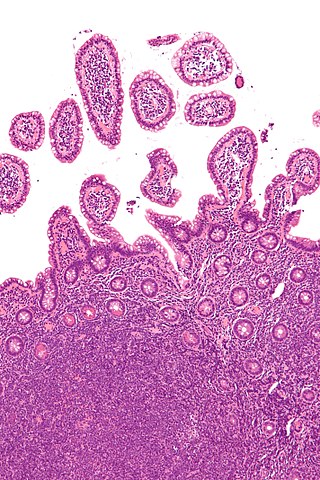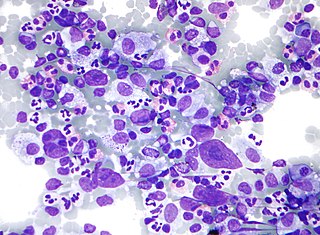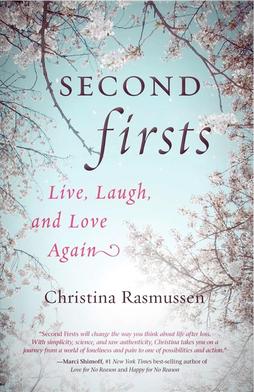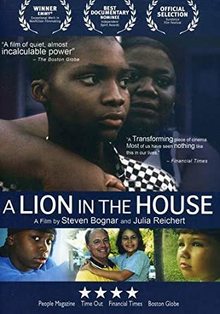Related Research Articles

Non-Hodgkin lymphoma (NHL), also known as non-Hodgkin's lymphoma, is a group of blood cancers that includes all types of lymphomas except Hodgkin lymphomas. Symptoms include enlarged lymph nodes, fever, night sweats, weight loss, and tiredness. Other symptoms may include bone pain, chest pain, or itchiness. Some forms are slow-growing while others are fast-growing.

Lymphoma is a group of blood and lymph tumors that develop from lymphocytes. The name typically refers to just the cancerous versions rather than all such tumours. Signs and symptoms may include enlarged lymph nodes, fever, drenching sweats, unintended weight loss, itching, and constantly feeling tired. The enlarged lymph nodes are usually painless. The sweats are most common at night.

Vincent Theodore DeVita Jr. is the Amy and Joseph Perella Professor of Medicine at Yale Cancer Center, and a Professor of Epidemiology and Public Health. He directed the Yale Cancer Center from 1993 to 2003. He has been president of the board of directors of the American Cancer Society (2012-2013). He is internationally recognized as a pioneer in the field of oncology for his work on combination-chemotherapy treatments.

Vinblastine (VBL), sold under the brand name Velban among others, is a chemotherapy medication, typically used with other medications, to treat a number of types of cancer. This includes Hodgkin's lymphoma, non-small-cell lung cancer, bladder cancer, brain cancer, melanoma, and testicular cancer. It is given by injection into a vein.

Ibritumomab tiuxetan, sold under the trade name Zevalin, is a monoclonal antibody radioimmunotherapy treatment for non-Hodgkin's lymphoma. The drug uses the monoclonal mouse IgG1 antibody ibritumomab in conjunction with the chelator tiuxetan, to which a radioactive isotope is added. Tiuxetan is a modified version of DTPA whose carbon backbone contains an isothiocyanatobenzyl and a methyl group.
Louise Lynn Hay was an American motivational author, professional speaker and AIDS advocate. She authored several New Thought self-help books, including the 1984 book You Can Heal Your Life, and founded Hay House publishing.
CHOP is the acronym for a chemotherapy regimen used in the treatment of non-Hodgkin lymphoma. CHOP consists of:
ABVD is a chemotherapy regimen used in the first-line treatment of Hodgkin lymphoma, replacing the older MOPP protocol. It consists of concurrent treatment with the chemotherapy drugs:

Carmustine, sold under the brand name BiCNU among others, is a medication used mainly for chemotherapy. It is a nitrogen mustard β-chloro-nitrosourea compound used as an alkylating agent.
Virginia v. Cherrix is a 2006 court case in which the Commonwealth of Virginia sued to force Starchild Abraham ("Wolf") Cherrix, aged 16 at the time of the court case, to undergo further conventional medical treatment for a highly treatable form of cancer, Hodgkin disease.
Emil J. Freireich was an American hematologist, oncologist, and cancer biologist. He was recognized as a pioneer in the treatment of cancer and use of chemotherapy and is often known as the father of modern leukemia therapy.

Hodgkin lymphoma (HL) is a type of lymphoma in which cancer originates from a specific type of white blood cell called lymphocytes, where multinucleated Reed–Sternberg cells are present in the patient's lymph nodes. The condition was named after the English physician Thomas Hodgkin, who first described it in 1832. Symptoms may include fever, night sweats, and weight loss. Often, nonpainful enlarged lymph nodes occur in the neck, under the arm, or in the groin. Persons affected may feel tired or be itchy.
High-dose chemotherapy and bone marrow transplant (HDC/BMT), also high-dose chemotherapy with autologous bone marrow transplant, was an ineffective treatment regimen for metastatic breast cancer, and later high-risk breast cancer, that was considered promising during the 1980s and 1990s. With an overall idea that more is better, this process involved taking cells from the person's bone marrow to store in a lab, then to give such high doses of chemotherapy drugs that the remaining bone marrow was destroyed, and then to inject the cells taken earlier back into the body as replacement. It was ultimately determined to be no more effective than normal treatment, and to have significantly higher side effects, including treatment-related death.

Jessica Ainscough was an Australian teen magazine editor who became a writer and wellness entrepreneur following a rare cancer diagnosis at the age of 22. Ainscough went by the self-coined nickname "The Wellness Warrior" and used her popular blog by the same name to share her personal story of using alternative cancer treatments. Ainscough died of her untreated cancer at the age of 29.
Dying To Be Me is a 2015 Indian Telugu-language short film written and directed by Deva Katta, starring Ravi Varma and Smita. The film highlights woman empowerment.

Second Firsts is a 2013 book published by the crisis intervention counselor Christina Rasmussen, in which she introduces a new model of grief based on the science of neuroplasticity. She describes grief as a catalyst for redefining identity, and outlines the process of "reentry", or returning to life.
Jeffrey Long is an American author and researcher into the phenomenon of near-death experiences (NDEs). A physician by training, Long practices radiation oncology at a hospital in Kentucky. Long is the author of Evidence of the Afterlife: The Science of Near-Death Experiences, which appeared on The New York Times Best Seller list. In 1998, he founded the Near Death Experience Research Foundation, which is concerned with documenting and researching NDEs.

ALion in the House is a 2006 American documentary film directed by Steven Bognar and Julia Reichert that explores the impact of childhood cancer on five different families throughout the span of six years in Ohio. The 225-minute long documentary, which took eight years to complete, follows the lives of cancer patients Justin Ashcraft, Al Fields, Alexandra Lougheed, Jen Moones, and Timothy Woods as they are treated at the Cincinnati Children's Hospital Medical Center.

Heal is a 2017 documentary film that was written and directed by Kelly Noonan-Gores and produced by Richell Morrissey and Adam Schomer. The film focuses on mind–body interventions and follows several individuals who used these techniques after being diagnosed with a fatal disease. It was reviewed by critics as an "informercial" that makes some valid points while pretending to be based on science yet promoting pseudoscience.
Margaret Ann Shipp is an American hematologic oncologist. She is the Douglas S. Miller Chair in Hodgkin Lymphoma at Harvard Medical School. Shipp is an elected Fellow of the American Society for Clinical Investigation and National Academy of Medicine.
References
- ↑ "#81-100 on the Spiritual 100 List in 2014 - Watkins MIND BODY SPIRIT Magazine". 3 June 2014. Retrieved 25 September 2018.
- ↑ "2012 New York Times Best Seller List". The New York Times. Retrieved 3 September 2014.
- ↑ "Anita Moorjani's amazing NDE and miraculous healing". International Association for Near-Death Studies. Retrieved 3 September 2014.
- ↑ "Anita Moorjani Answers an Oncologist". Lab of Evolution. 3 November 2011. Retrieved 15 August 2021.
- ↑ Kaye, Randi (29 November 2013). "Stories of life, death and faith: 'To Heaven and Back'". CNN. Retrieved 3 September 2014.
- ↑ "Proud to Be Me Growing up in a cultural mélange". Hay House. Retrieved 3 September 2014.
- ↑ "Anita Moorjani". South China Morning Post. 29 July 2012. Retrieved 30 April 2024.
- ↑ Moorjani, Anita (1 March 2012). My Journey from Cancer, to Near Death, to True Healing (1st ed.). USA: Hay House; Unabridged Version edition (1 March 2012). p. 98. ISBN 978-1401937515 . Retrieved 3 September 2014.
- ↑ “Dying to Be Me”, 76.
- ↑ "Anita M's NDE". Near Death Experience Research Foundation (NDERF). Archived from the original on 26 August 2014. Retrieved 3 September 2014.
- ↑ Dyer, Wayne. "Dr. Wayne Dyer: Wishes Fulfilled". PBS. Archived from the original on 17 August 2014. Retrieved 3 September 2014.
- ↑ Allen, Vicky (16 September 2012). "Is there a negative side to positive thinking?". The Herald Scotland. Retrieved 3 September 2014.
- ↑ Parry, Hazel (3 February 2007). "A remarkable recovery, but was it mind over matter or modern science?". South China Morning Post: International Edition. Retrieved 21 March 2018.
- ↑ JO,"Life After Death and Finding Your Purpose? Anita Moorjani", Healing Earth, February 13, 2018.